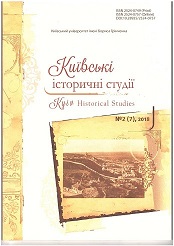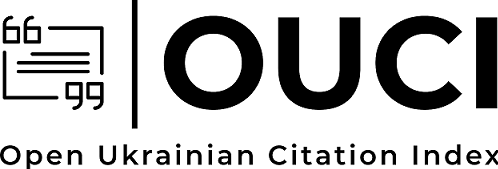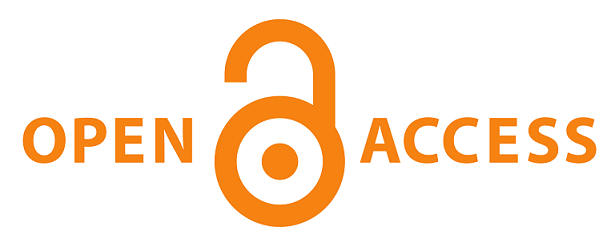THE ESTABLISHMENT OF GENDER PRINCIPLES IN EDUCATION IN JAPAN AT THE BEGINNING OF THE 20TH CENTURY
DOI:
https://doi.org/10.28925/2524-0757.2018.2.1518Keywords:
gender equality, gender education, education in Japan, female educationAbstract
Now the principle of gender equality is a well-established phenomenon in the educational scheme of Japan. Starting from secondary and higher education, there is practically no difference in the ratio of enrollment of students between men and women. However, historically, especially at the beginning of the formation of the modern education system, the opportunities for girls to get education were less favorable than for boys. Even in the compulsory primary school, the frequency of girls attending educational institutions was very low. Access to secondary education for girls was also limited. The situation began to change at the turn of the 19–20 centuries. In Japan, a number of laws were passed that opened the doors of educational institutions for girls. In September 1872, the Law on Education was passed, which introduced compulsory primary education for all. Representatives of all social groups, as well as women received the right to education. According to this law, by 1880, 25,000 primary schools should be created in the country. It is important to remember that then almost all children began to attend school. At that time, foreign specialists are actively involved, who help to adapt to the new system, and teach in schools. Education along with military service and the taxes payment became the third important duty of the Japanese. Japan has achieved gender equality in education, at least provided equal opportunities for access to every level of education. There was an imbalance in the gender distribution of students at some faculties and departments in higher education institutions. Thus, for example, women were prevailing in the field of education, literature, nursing, men were prevailing in science and technology. However, thereafter, the number of female students specializing in science and technology substantially increased. Today, many girls are studying at the National Defense Academy and the University of Marine Science and Technology. All this became possible thanks to the reforms that the Japanese educational system began in the early twentieth century
Downloads
References
Zinurova, E. G. (2004). Osnovnyie tendentsii i reformirovanie systemy obrazovaniia v Yaponii (konets XX–nachalo XXI v.). Disertatsiia kand. ped. nauk:m13.00.01, K., 179 p. [in Russian]. http://www.dissercat.com/content/osnovnye-tendentsii-reformirovaniya-sistemy-obrazovaniya-vyaponii konets-xx-nachalo-xxi v
Mori Arinori. (1994–1997). Entsiklopediia Nipponika: v 26 t., Tokio: Sogakkan [in English].
Nanivskaia, V. T. (1989). Sistema moralnogo vospitaniia v yaponskoi shkole. M., Yaponiia: ideologyya, kultura, lyteratura, 69–76 [in Russian].
Tikhotskaia, I. S. (1999). Systema obrazovaniia Yaponii: istoky і simptomy krizisa. M., Yaponiia 1998–1999, ezhegodnik, 164–181 [in Russian].
Dr. Akito, Arima. The Future of Higher Education in Japan [in English]. http://archive.unu.edu/hq/public-lectures/arima.pdf
Education in Japan: Past and Present [in English]. https://www.nier.go.jp/English/educationjapan/pdf/201103EJPP.pdf
Gender Equality in Education in Japan [in English]. https://www.nier.go.jp/English/educationjapan/pdf/201403GEE.pdf
Japanese Women Yesterday and Today. (1996). About Japan, № 5, 52–54 [in English].
Kuchai, T. P. Analysis of the Education Systems of Japan and Ukraine [in English]. https://pdfs.semanticscholar.org/1
Nagai, M. (1971). Higher Education in Japan. Tokyo, pp. 215–216 [in English].
Overview of the History of Japans Education [in English]. https://www.jica.go.jp/jica-ri/IFIC_and_JBICI-Studies/english/
The Basic Law for a Gender-equal Society (Law No. 78 of 1999) [in English]. http://www.gender.go.jp/index2.litml
The Constitution of Japan [in English]. http://www.ndl.go.jp/constitution/e/etc/c01.html
Published
How to Cite
Issue
Section
License
Copyright (c) 2019 Kyiv Historical Studies

This work is licensed under a Creative Commons Attribution-NonCommercial-ShareAlike 4.0 International License.
Authors who publish in this journal retain the right of authorship of the work and give to the journal right of first publication of this work under the conditions of Creative Commons: Attribution-NonCommercial-ShareAlike 4.0 International (CC BY-NC-SA 4.0), which allows others freely distribute the work published with reference to the authors of the original work and the first publication of this magazine.














